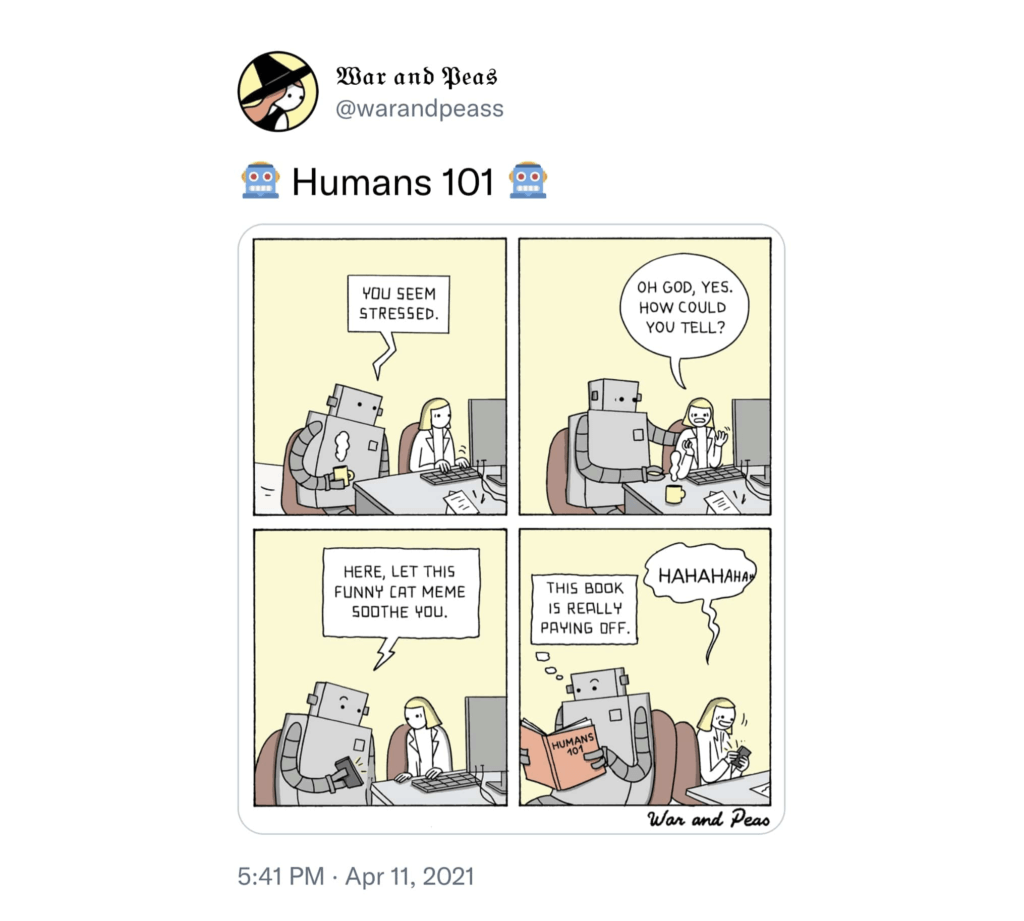Reignite WFH Productivity With Workplace Stoicism
Psst, want to know the secret of home office productivity? It's simple. You'll need a designer office chair, a mahogany desk, and a handmade fountain pen to mat...
Psst, want to know the secret of home office productivity? It's simple. You'll need a designer office chair, a mahogany desk, and a handmade fountain pen to match. Or... you can take a deep dive into a 2,300-year-old philosophy for guidance. Enter workplace Stoicism.
Unordinary times call for unordinary measures, and Stoicism seems to fit the latter category. In today’s article, we bite into the ancient philosophy and its premises. We also discuss how workplace Stoicism can help you feel good and get more done at your home office.
🐎 Hold your horses… The spiritual aspect of remote work is close to our hearts. Be sure to check other similar articles when you’re done reading.
🤔 What’s the Deal with Modern Stoicism?
“Now that I've suffered shipwreck, I'm on a good journey.”
Zeno of Citium
The Origins of Stoicism
As it’s often the case with spiritual awakenings, the story of Stoicism started with a personal tragedy. Around the 3rd century BC, a merchant by the name of Zeno of Citium (Cyprus) shipwrecked when transporting dye from Phoenicia to Peiraeus.(1)
Following the traumatizing event, Zeno sought solace in philosophical thought, most notably that of Crates of Thebes, Philo, and Diodorus Cronus. Eventually, Zeno started preaching his own philosophy at The Stoa Poikile at the Agora of Athens.(2)

Ruins of the Stoa Poikile, image by Tomisti(3)
While it'd be impossible to paint the full picture of the Stoic philosophy in one article, we can say its overarching goal is to reach “eudaimonia” or a good life. This can be achieved through virtuous behavior, control of one’s emotions, and living in concord with nature.
The Great Stoic Revival or the Fifth Stoa
Stoicism helped the ancients deal with the maladies of the time. Nowadays, over 2000 years after Zeno’s awakening, the philosophy re-emerges as a band-aid for the troubles of the modern world. And it’s one cut out for the 21st century.

The Modern Stoic’s Decision Making Algorithm(4)
According to professor Massimo Pigliucci who’s credited with popularizing modern Stoicism, the core principles of Stoic teachings don’t come with an expiration date.
“I am tempted to say that Stoicism is particularly tailored for our times, characterized as they are by major political upheavals and threats to human welfare on a global scale. But in reality Stoicism has always been useful to people, because it has been the case throughout history that many things are not under our control [...].”(5)
Among other things, Pigliucci attributes the emergence of the “fifth stoa” or Stoicism 5.0 to social media, widespread access to information, and reprinting of classic texts.
And the Stoic wave is rising.
The sales of Stoic books and text have been slowly ramping up over the last few years. In the first quarter of 2020, Penguin Random House noted a 42% increase in the sales of Marcus Aurelius’ Meditations print and a 356% spike in the sale of its ebooks.(6)

1811 edition of Meditations by Marcus Aurelius(7)
From individuals to organizations and productivity gurus, we’re hooked on Stoicism. And with things as they are, the philosophy will likely get more traction down the road.
👨💻 Workplace Stoicism and a Happy Home Office
While the Stoic philosophy offers ample no-nonsense life advice, it also holds a promise of reinvigorating the way we work and collaborate with each other.
F the stoic advice at work will help you:
💬 Become a better communicator.
🤯 Cope with information overload.
🎮 Curb typical work-from-home distractions.
💭 Reduce anxiety and intrusive thoughts.
🙏 Appreciate the (dis)comfort of WFH.
🧠 Focus on deep, meaningful work.
🌟 And much more...
So, if you’re still grappling with the work-from-home reality, here’s a handful of workplace Stoicism tips that’ll help you find joy at the confines of your home office.
1. Focus on the Things You Can Control
“No person has the power to have everything they want, but it is in their power not to want what they don’t have, and to cheerfully put to good use what they do have.”
Seneca the Younger, Moral Letters to Lucilius
The acceptance of the inevitable is one of the core principles of Stoicism. And when your team is several time zones apart, many things can and will go wrong.
You can’t predict power outages, project delays, or a co-worker taking a week off and leaving you to deal with the bulk of the work. Those things are outside your control.

Things You Can and Can't Control by BelievePerform
You can, however, control the way you respond to those obstacles. That could mean getting into the right mindset, cranking up your schedule, or asking others for help.
Workplace Stoicism Tips #1 ✅
💭 Always ask yourself: “Is this within my control?”
💭 Don’t stress over things outside your influence.
💭 Learn to let it go and accept the inevitable.
💭 Approach work with the right mindset.
💭 Consider what’s the worst that can happen.
💭 Take emotions out of the equation.
💭 Silence your inner critic and just start.
2. Treat Time as Your Most Valuable Possession
“People are frugal guarding their personal property; but as soon as it comes to squandering time they are most wasteful of the one thing in which it is right to be stingy.”
Seneca the Younger, On The Shortness Of Life
Memento mori—remember that you must die—doesn’t seem like the most optimistic piece of advice. But it perfectly captures the elusive and fragile nature of time.
If you’re like most remote workers, chances are you spend way too much time on shallow and low-value work, like multitasking or chatting with your team.

Things to Do While Multi-Tasking by Coolness Graphed(8)
Instead, you should become more mindful of how you spend your time and focus on deep work—cognitively demanding tasks performed in a state of utmost concentration.
Workplace Stoicism Tips #2 ✅
💭 Be frugal with the way you spend your time.
💭 Employ a time-tracking solution.
💭 Think twice before saying “yes” to requests.
💭 Predict and prevent scope creep.
💭 Plan diligently and set realistic deadlines.
💭 Master the art of timeblocking/timeboxing.
3. Leverage Good Habits and Routines
“At dawn, when you have trouble getting out of bed, tell yourself: ‘I have to go to work–as a human being. What do I have to complain of, if I’m going to do what I was born for–the things which I was brought into the world to do? [...]”
Marcus Aurelius, Meditations
Do you wake up at dawn pumped for the challenges of the day? Or do you stay in bed until 10 and then drag your lifeless body to the door of your home office?
Stoics believed good habits are part of a virtuous life. Whether that’s getting up early, keeping a commonplace book, or improving professional skills, consistency is key.

The Exercycle by Jorge Cham via PHD Comics(9)
When you work from home, you’re free to set your own routine. And a solid routine can give you something to fall back on when things don’t go according to plan.
Workplace Stoicism Tips #3 ✅
💭 Create a consistent morning/evening routine.
💭 Star with small, incremental improvements.
💭 Find an accountability partner to keep you on track.
💭 Reward yourself for a job well done.
💭 Reserve your mornings and evening for quiet reflection.
💭 Take regular breaks and enjoy your time off.
4. Listen Before You Speak
“Be silent for the most part, or, if you speak, say only what is necessary and in a few words. Talk, but rarely, if occasion calls you, but do not talk of ordinary things—of gladiators or horses races or athletes or of meats or drinks—these are topics that arise everywhere”
Epictetus
You’ve heard and seen it all. You’re at the top of your game and have all the skills you need to act on your own. Co-workers look up to you and take everything you say for granted.
But that doesn’t mean you can afford not to listen.

The performance of a distributed team depends on effective communication. And you can’t become a good communicator without first becoming a darn good listener.
Workplace Stoicism Tips #4 ✅
💭 Use body language during video conferences.
💭 Ask questions when you need clarification.
💭 Keep an open mind and embrace civil disagreement.
💭 Take notes and summarize the speaker’s intention.
5. Don’t Be Afraid to Ask For Help
"Don’t be ashamed to need help. Like a soldier storming a wall, you have a mission to accomplish. And if you’ve been wounded and you need a comrade to pull you up? So what?"
Marcus Aurelius, Meditations
Embracing Stoicism doesn’t mean you have to face adversities alone. While your team can be thousands of miles away, you can still reach out and ask for help.
Cultivate and profit from team camaraderie. Seek support whenever you’re stuck, face technical obstacles, or simply need a kindred spirit to get something off your chest.

Gandalf Problem Solving a Flowchart by the LOTROProject(10)
Start by jumping on a virtual coffee break with a teammate to talk things out. You can also arrange a virtual coworking session and get the entire team on board.
Workplace Stoicism Tips #5 ✅
💭 Identify the areas you want to improve.
💭 Make a list of team members who can help.
💭 Conduct your own research before reaching out.
💭 Don’t be afraid to ask silly questions.
💭 If possible, prioritize video over chat or email.
💭 Be specific in your requests.
6. Embrace Discomfort
“Set aside a certain number of days during which you shall be content with the scantiest and cheapest fare, with coarse and rough dress, saying to yourself the while, ‘Is this the condition that I feared?”
Seneca the Younger, Moral Letters to Lucilius
For many, working from home is a cushy respite from the “outside world.” Think typing reports from a sofa, watching Friends, and munching on a bowl of potato chips.
The problem is too much comfort can make you complacent and fragile. Want to prime yourself for adversity? You need to leave your comfort zone once in a while.

The Stoic way of life is compatible with discomfort. It doesn’t matter if you’re facing small inconveniences or major obstacles, you accept whatever life throws at you.
Workplace Stoicism Tips #6 ✅
💭 View discomfort as a natural part of your life.
💭 Delay gratification to master self-control.
💭 View momentary distress as a lesson in “antifragility.”
💭 Optimize your workplace for utility over coziness.
💭 Wake up earlier and start your day before everybody else.
7. Take a Stoic Walk
“We should take wandering outdoor walks, so that the mind might be nourished and refreshed by the open air and deep breathing.”
Seneca the Younger, On The Shortness Of Life
Zeno, the founder of the school of Stoicism, would teach while strolling down the steps of the Stoa Poikile. Seneca advocated walking barefoot while Epictetus encouraged his students to combine solitary strolls with internal dialog.
The lesson for today?
Whenever you feel stuck, go for a walk. Let your thoughts flow, contemplate your surroundings, reset, and get back to work with a mind full of fresh ideas.
Workplace Stoicism Tips #7 ✅
💭 Put some “walking” time on your schedule.
💭 Have a virtual team meeting in the field.
💭 Listen to an audiobook or podcast on the go.
💭 Use solitary time to plan your next step (pun not intended).
⚙️ Workplace Stoicism and the Eudaimonia Machine
Embracing workplace Stoicism isn’t only confined to the spiritual aspect. It’s also the way you arrange your actual work environment to support meaningful work.
Enter the Eudaimonia Machine.
Created by Chicago-based architect David Dewane, the Eudaimonia Machine is a conceptual approach to modern office planning. In a nutshell, Dewane’s project divides an office space into a series of rooms, each designed to support deep, focused work.

The Occupants of the Eudaimonia Machine proceed from one room to another in a linear fashion in order to build up deep work potential. The rooms include:
🖼 The Gallery. A display of the organization’s deep work examples.
☕️ The Salon. A place for socializing and team communication.
💼 The Office. A traditional office designed for “shallow” work.
📚 The Library. An archive of previous projects for research purposes.
🧘♂️ The Chamber. A distraction-free environment for tackling deep work.
While it’d be difficult to create this workflow at home, you can achieve similar vibes using real-time collaboration software like Taskade. Taskade allows teams to collaborate inside self-contained workspaces with video-conferencing capabilities.
And the best part? We built Taskade to support deep, focused work. And that’s something that’s not easily achieved in a fully remote work environment.
If you want to give Taskade a go, jump over here and sign up for a free account today. You can also test Taskade’s core functionality by visiting our Live Demo page!
🧘♂️ Master the Art of Workplace Stoicism
Workplace Stoicism can help you find peace and tranquility, get out of a rut, and overcome adversities whenever you hit a roadblock. So, why not give it a try?
⭐️ Focus on the things you can control.
⭐️ Treat time as your most valuable asset.
⭐️ Leverage good habits and routines.
⭐️ Listen before you speak.
⭐️ Don’t be afraid to ask for help.
⭐️ Embrace discomfort.
⭐️ Put your shoes on and take a stoic walk.
Oh, and don’t forget to grab our free workplace Stoicism template. Save it, add your own tips, and feel free to share with the rest of your team! 👇
Till next time! 👋
🔗 Workplace Stoicism Resources
https://dailystoic.com/its-only-after-youve-lost-everything-that-youre-free-to-do-anything/
https://en.wikipedia.org/wiki/Stoa_Poikile#/media/File:Stoa_Poikile_1.jpg
https://howtobeastoic.files.wordpress.com/2015/12/stoic-decision-making.jpeg
https://modernstoicism.com/interview-with-stoicon-2020-speakers-massimo-pigliucci/
https://en.wikipedia.org/wiki/Meditations#/media/File:MeditationsMarcusAurelius1811.jpg
http://lotrproject.com/blog/2013/01/09/gandalf-problem-solving-a-flowchart/
🧬 Stoic Productivity Tools Built with Genesis
Practice mindfulness and focus with these AI-powered apps inspired by Stoic principles:
| App | What It Does | Clone |
|---|---|---|
| Breathe Circle | Guided breathing for calm and focus | Clone → |
| Mood Tracker | Track emotions and find patterns | Clone → |
| Minimalistic ToDo | Simple, distraction-free task management | Clone → |
| Motivation Map Studio | Visualize goals and stay grounded | Clone → |
| Fortune Cookie | Daily wisdom and reflection prompts | Clone → |
🔍 Explore All Community Apps →
Build your own mindfulness system with Taskade Genesis — describe what you need, and watch it come to life.
Your living workspace includes:
- 🤖 Custom AI Agents — The intelligence layer
- 🧠 Projects & Memory — The database layer
- ⚡️ 100+ Integrations — The automation layer
Get started:
- Create Your First App → — Step-by-step tutorial
- Learn Workspace DNA → — Understand the architecture
Read more:
- 8 AI Health & Wellness Workspaces
- How to Focus While Working From Home
- Best Productivity Tips for 2025
